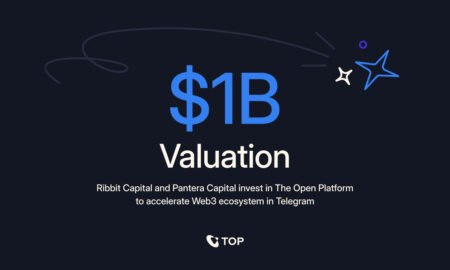The way businesses have been communicating digitally is rapidly evolving with the emergence of the Autonomous AI Agents that are quickly replacing the traditional chatbots. Many business leaders being inquisitive about “What is an AI Agent” have discovered these smart systems to be the next big thing in customer engagement. When applied to conversations, AI Agents can work on their own, understand context, make decisions, and carry out complex tasks based on their defined goals – all without needing help from humans.
One might compare them to chatbots – but know that these agents aren’t merely advanced chatbots; instead, they are powerful automation systems that businesses can use to drive critical business functions. These Autonomous AI Agents can handle entire operational workflows—from lead generation and qualification to order management, customer onboarding, and conversion optimization—functioning as autonomous business units rather than simple conversational interfaces.
The transition represents a major shift in AI capabilities. While conventional chatbots follow fixed scripts with limited flexibility, the Autonomous AI Agents on the other hand, work independently. —AI agents gather additional information before making decisions, can use complex criteria, maintain contextual awareness across multiple interactions, understand nuanced intent, and perform smart actions without human input.
The modern AI Agents address critical business challenges through true intelligence. Rather than responding to simple prompts; they actively engage in problem-solving, think through the challenges, and deliver personalized service at scale. The question for the businesses is no longer whether they should adopt AI Agents for customer interactions- it’s whether their existing approach – be it manual or using chatbots is becoming obsolete with this technological revolution.
Beyond Basic Automation: Next-Gen Agent Architecture
Modern Autonomous AI Agents are often compared to chatbots, but that is a very narrow view. They fundamentally differ from traditional chatbots in their underlying architecture, scope, agency and the experience for the user. They are also faster to build and don’t require extensive scripts or training data. While conventional chatbots operate on decision trees and keyword matching, and need constant upkeep with re-training, AI Agents employ sophisticated large language models combined with reasoning frameworks and tools that make them capable of decision-making.
The competitive advantage of Autonomous AI Agents stems from several key technological advances:
Goal orientation: Unlike chatbots that simply respond to inputs, AI Agents work toward specific business goals. Companies define what they want to achieve—like increasing sales, improving customer satisfaction, or reducing support time—and the AI Agent actively works toward these objectives. For example, a Shopping Assistant AI Agent in retail might be programmed to prioritize converting browsing shoppers into buyers, while an order management AI Agent might focus on resolving issues without escalation. This goal-driven approach means the AI constantly evaluates whether its actions are helping achieve business outcomes, while answering customer queries.
Decision-making capability: Autonomous AI Agents don’t just follow fixed scripts like old chatbots. They can think through different options, follow business rules, and choose the best response based on what the customer needs and what the business wants. Their decision-making is more like how a human would think—probing to understand more, checking history, considering the sentiment and acting accordingly.
Contextual memory: Modern AI Agents remember past customer interactions across chats, calls, and can also access customer history available in other business systems. This means customers don’t have to repeat themselves. For example, if someone says, “the issue I had last week,” the AI can access that specific problem and continue the conversation smoothly.
Multichannel and multimodal capabilities: WhatsApp AI Agents and other autonomous conversational systems can be deployed across multiple channels (website chat, mobile apps, social media, messaging platforms) and multiple modalities (text, voice). The multimodal capability and a thoughtful set up ensure high reach and helps businesses orchestrate journeys to meet objectives.
Understanding Intent: Beyond simple keyword matching, these AI Agents understand the underlying purpose of customer queries, even when expressed in different ways. This natural language understanding capability allows them to address needs that might be unclear, or seek more information cutting up confusion in order to provide meaningful assistance.
Taking Action: Most critically, Autonomous AI Agents can perform concrete actions on behalf of businesses—updating customer data in CRM systems like Zoho CRM or Salesforce, scheduling appointments in calendaring tools like Google Calendar or Zoho Bookings, or escalating issues within IT service management systems like Zendesk or Freshdesk. This ability to take action across multiple business systems, not just provide information, transforms them from conversation partners to productive digital workers.
Industry-Specific Implementations
Retail: Autonomous Shopping Assistants
Gupshup’s implementation of Autonomous AI Agents for retail chains demonstrates the transformative potential of this technology. Their WhatsApp AI Agent solution seamlessly integrates with the retailer’s existing systems to create a unified shopping experience across digital and physical touchpoints. The AI Agent handles complex customer journeys—from initial product discovery to post-purchase support—maintaining context throughout the entire relationship.
The AI Agent shows real independence by going beyond simple keywords—it understands product features, handles complex discounts, and gives personalized suggestions based on live stock levels and what the customer prefers.
Crucially, it exhibits agency—it doesn’t just react, but proactively engages the customer to gather missing context before making suggestions. For example, if a customer searches for “running shoes,” the AI Agent may follow up with clarifying questions like, “Are you looking for road or trail running?” or “Do you prefer a specific brand or color?” Based on the responses, it tailors its recommendations, ensuring they are both relevant and aligned with current stock and promotions. When products are unavailable, it doesn’t simply report the issue but suggests close alternatives using sophisticated matching algorithms, often highlighting similar items that are on sale or available for faster delivery.
When products are unavailable, it doesn’t simply report the issue but proactively suggests alternatives based on sophisticated matching algorithms.
Key metrics from Gupshup’s implementations in retail include improvements in conversion rates, higher average order values, higher self-serve requests, and impressive resolution rates for customer service inquiries without human intervention. The system’s ability to maintain conversation context across multiple shopping sessions has proven particularly valuable for complex purchase decisions.
Financial Services: Compliance-Aware Customer Service
In the financial services sector, Autonomous AI Agents are set to have addressed the dual challenges of providing responsive customer service while maintaining strict regulatory compliance. A critical aspect it to mitigate hallucinations and the use of only pre-approved defined data sources. This means their responses have high accuracy, with no made-up or unreliable information—making them perfect for high-risk environments where precision and accountability are critical.
For example, if a customer asks about the interest rate on a loan product, the agent pulls this directly from the bank’s product database or a pre-configured source. If the answer isn’t available within those defined limits, the agent responds transparently with, “Let me connect you with a specialist for the most accurate information,” rather than making assumptions.
These agents can take care of many tasks—from simple account questions to explaining complex financial products. They automatically include legal disclaimers when needed and keep detailed records of every conversation for audits.
When it comes to explaining complex financial products, the agent doesn’t simply “adapt” to the customer’s financial literacy level on its own. Instead, it first gathers clues through the conversation such as whether the user is asking for definitions of basic terms or navigating advanced investment queries.
For instance, if a customer asks, “What’s the difference between a mutual fund and a fixed deposit?” the agent is trained to recognize this as a sign of a beginner and follow up with, “Would you like a simple overview or a detailed comparison?” Based on the response, it adjusts its tone and depth.
These insights are then used by the business to define user segments —such as beginner, intermediate, or advanced. Most importantly, this is not entirely automatic but is based on predefined rules and flows set beforehand. Human oversight plays a key role in designing these logic trees and ensuring that every message aligns with both brand tone and regulatory expectations.
Results from such implementations include measurable improvements like shorter customer wait times, higher first-contact resolution, and increased customer satisfaction—while ensuring that every piece of communication is compliant, traceable, and trustworthy.
Integration with Existing Business Systems
The true power of Autonomous AI Agents emerges when they’re fully integrated with existing business infrastructure. Unlike standalone chatbots, modern AI Agents function as connective tissue between various enterprise systems.
CRM Integration
In retail environments, Autonomous AI Agents don’t operate in isolation—they integrate seamlessly with CRM systems like Zoho CRM or Salesforce to access rich customer profiles. This enables the agent to reference a customer’s purchase history, saved preferences, and past support interactions in real time. But the capabilities go beyond CRM alone.
These agents also connect with eCommerce platforms such as Shopify, WooCommerce, or Magento, allowing them to pull live product catalogs, check real-time inventory, and align recommendations with current promotions or pricing tiers.
For example, when a customer messages a WhatsApp AI Agent saying, “Show me something similar to what I bought last month,” the agent can instantly look up the transaction from Shopify or WooCommerce, match it with the CRM-stored profile, and suggest similar or complementary products based on both product metadata and availability.
Moreover, the agent builds and enriches conversational profiles over time. These are dynamic customer records created and updated as the agent interacts with the user—capturing preferences like style choices, price sensitivity, preferred delivery timelines, or even communication tone.
So if a customer often asks for “budget-friendly options” or frequently browses a certain category, the agent notes these behaviors and uses them to fine-tune future responses—offering more relevant suggestions even if the customer doesn’t explicitly state their needs again.
Together, this tight integration with CRMs, eCommerce platforms, and real-time conversational context makes the AI Agent not just reactive, but proactively helpful—delivering truly personalized shopping experiences that evolve with every interaction.
Conclusion
ROI timelines vary by industry, but businesses typically see quick positive returns. Businesses often achieve significant ROI within the first few months through reduced operational costs and increased customer retention. Retail implementations of WhatsApp AI Agents frequently see ROI through higher conversion rates and larger average order values.
To evaluate whether Autonomous AI Agents are right for your organization, begin by assessing your current approach to marketing and sales interactions, and your customer support set up. . Which interactions consume disproportionate staff time? Where do customers express the most frustration? Which processes would benefit most from 24/7 autonomous handling?
Moving from manual approaches and basic chatbots to Autonomous AI Agents isn’t just about better tech—it’s a shift in how businesses think about customer conversations. Instead of handling isolated queries, these agents manage entire journeys, understand context, and drive real outcomes like sales, support resolution, or scheduling. Organizations that embrace this shift gain more than efficiency—they create digital representatives that truly embody their brand values while delivering exceptional customer experiences.
Ready to explore how Autonomous AI Agents could transform your business? Contact our team today.




























